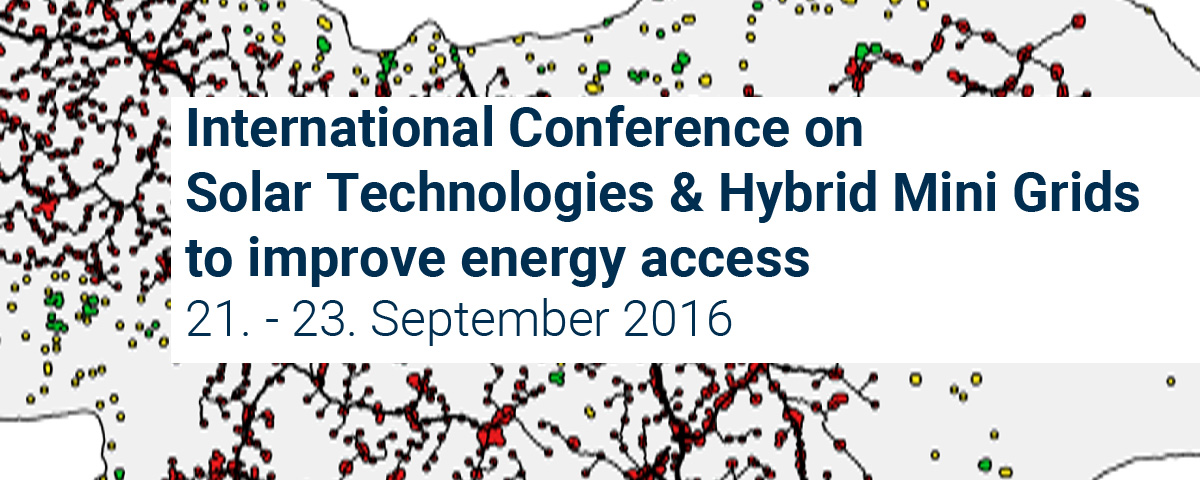
8th solbat conference on battery storage
21. September 2016
International Conference on Solar Technologies & Hybrid Mini Grids to Improve Energy Access
21. September 2016Energy Access for Sub-Saharan Africa with the focus on hybrid mini-grids (Blechinger et al. 2016)

Philipp Blechinger, Catherina Cader, Ayobami Solomon Oyewo, Christian Breyer, Paul Bertheau
Conference paper at the 1st International Conference on Solar Technologies & Hybrid Mini Grids to Improve Energy Access. 21th-23th September 2016 in Bad Hersfeld
Within the Sustainable Development Goal number 7 (SDG7) and UNs Sustainable Energy4All initiative it is targeted to achieve universal access to sustainable energy by 2030. Access to electricity enables social and economic development due to improved education, health care, agriculture and business opportunities. To reach this access enormous efforts have been and are undertaken globally. Nevertheless, still 1.3 billion people have no sufficient electricity supply Especially in sub-Saharan Africa (SSA) the majority of people lack access to electricity. The current actions of grid extensions in SSA are undermined by strong population growth in rural areas and by weak central grid and power generation infrastructure. The current central power supply infrastructure causes 8.8 percent of sales losses in SSA due to frequent power outages [4]. Connecting new customers to these supply systems without adding additional power generation capacities would even worsen this situation. Thus, to accelerate electrification in SSA it is recommended to not only focus on grid extension as electrification option, but also on decentralized hybrid mini-grids and stand-alone systems. IEA's New Policies Scenario suggests the generation of 26 TWh for only sub-Saharan Africa by mini-grids until the year 2040. The two most prominent technologies to achieve that are solar photovoltaic (PV) and oil, followed by hydro power. Besides IEA’s findings on the overall numbers there exist still challenges on the geospatial planning of the electrification scenarios, e.g. precisely projecting investment costs of different electrification interventions.




